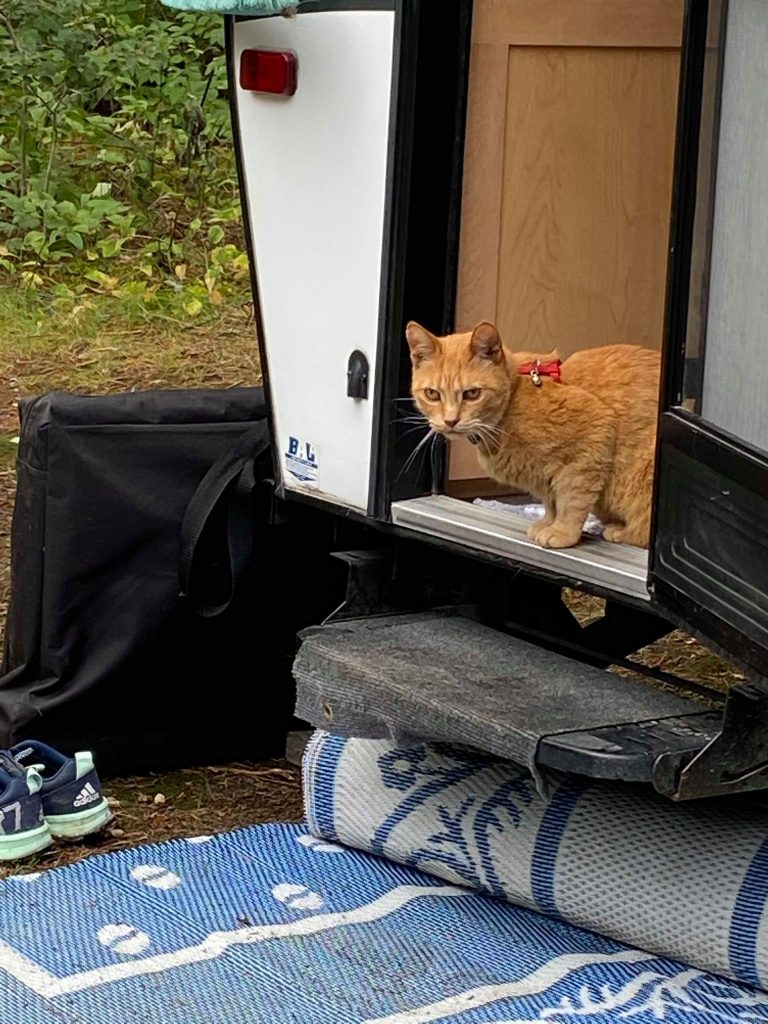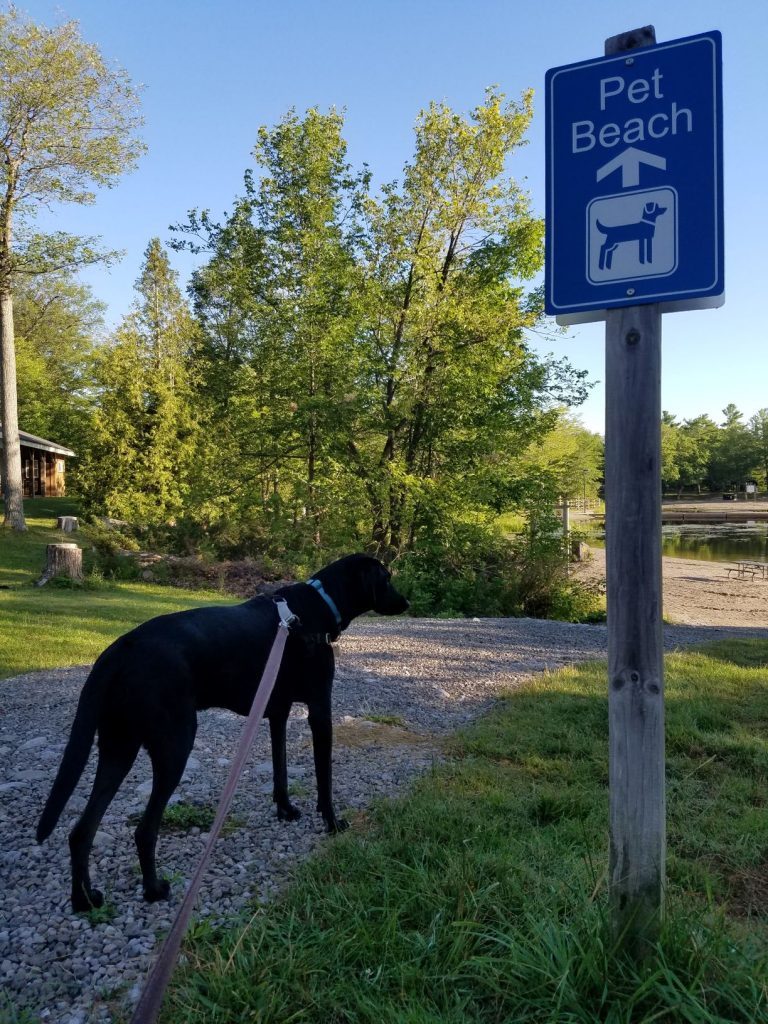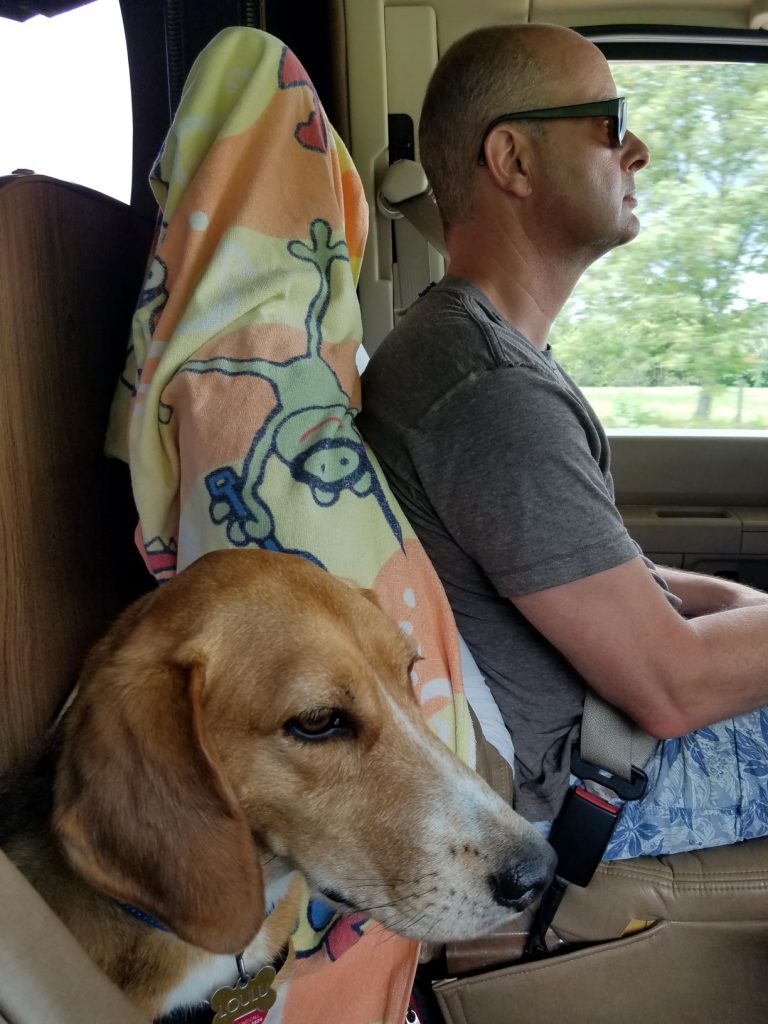The year 2020 has been a trying one, but there has been some good news. RV rental and purchase sales are way up, as is pet adoption, and vacationers are hitting the road with their furry friends.
Animal sitting and dog walking company Rover surveyed 500 Canadian pet parents in July 2020 to find out how people were feeling about travel during the COVID-19 pandemic. The results clearly show that quarantine life has strengthened the human-animal bond.

The Mamas and the Papas once sang: “You gotta go where you want to go…Do what you want to do…With whoever you want to do it with…” Though COVID-19 has affected ‘going where we want to go’ it has positively altered travellers’ perceptions on ‘who they want to do it with’ and many Canadians are now choosing camping and RVing with their pets over flying to a destination.
Rover’s survey revealed that 67% of dog owners had summer plans they had to cancel due to the coronavirus and that, pre-pandemic, 35% of dog owners planned to bring their pet with them.
Travel changed because of COVID-19 and caused Canadian pet owners to reflect on their summer getaways. The survey showed that:
- 62% of pet parents considered travelling this summer (as lockdown measures were eased)
- 67% of dog owners made summer plans to travel by car or RV; only 22% choosing to travel by air
- 59% of pet parents planned to bring their dog with them on their summer trip
- Only 11% of pet parents felt comfortable leaving their dog at a kennel/boarding business during their travel
RV Lifestyle Magazine spoke with Rover’s Veterinary Medical Advisor Dr. Rebecca Greenstein about travelling with dogs. Dr. Greenstein is chief veterinarian and practice owner at Kleinburg Veterinary Hospital.
How can one best prepare for a trip with their dog in an RV or car?

“First, know your dog; if your pup has a known history of motion sickness or car-associated anxiety, or is fearful or intolerant of any changes in routine, an extended road trip that includes pets may not be in the cards.
Getting a pet acclimatized to a new and strange environment – whether it’s the cabin of an RV or otherwise – can be a challenge so go slow and respect your dog’s comfort zone and boundaries. Be sure to offer calm reassurance as your dog explores the interior, letting him or her sniff about at his or her own pace. Offer treats and praise to positively reinforce the idea that this new space is safe and secure.
Bring along familiar elements like a favorite toy, bed and blanket to help make the new environment more inviting and observe where your dog seems to feel most comfortable – on the floor or next to people or looking out the window. Synthetic pheromone sprays or calming collars, like Adaptil, may help soothe anxiety in some pets; talk to your vet about options available for nervous furry travellers.”
It’s difficult to get a dog used to an RV if it’s a rental unit. Any advice here?
“If you’re able to take a rental car or RV out for a test run in advance of the trip it’s a great idea to do a mini dress rehearsal so your dog can learn that this new space is a safe and calming one. Start with a few minutes only and then gradually increase the amount of time in the vehicle, while offering soothing words, belly rubs, and treats, as appropriate. Be mindful to read cues: if your dog seems anxious or upset, maybe it’s time for a break and time-out before re-introducing them to a potential stressor.
I would not recommend leaving dogs alone in ANY new unfamiliar environment; we never want to risk having them panic and start associating new experiences or environments with a fear response.”
—
There are people who camp and RV with their cats and Joanna Blink is one of them. Blink is a veterinary pharmaceutical sales rep and owner of two dogs and a cat named Jaegger, now eight, and she’s camped with her pets for years in Ontario Parks. Her cat loves being outside and “the thought of jailing Jaegger at home was unbearable,” says Blink. Jaegger sleeps in the trailer with Blink while camping (often on her head!) and on the front passenger seat when in the car.

Blink explains: “Jaegger was adopted at nine months. This former barn cat has happily morphed into a three-season, warm weather indoor/outdoor cat (in winter she is all indoor!). She goes on a leash/harness when we arrive at the campsite to acclimate and add some scents to her area. After that, she has a cat tracking device on her harness that works like a beacon so that I can always find her. Thankfully, she is never far from the trailer. She comes in at night and when I leave the site. The dogs and I totally love camping with sweet Jaegger.
I bring a small litter box and a container of lightweight litter – the litter goes both outside and inside with her. I leave the box inside the bathroom of the trailer and empty it into a plastic bag for travel. When I leave the campsite, she and the dogs enjoy their quiet time. I usually have to wake them when I return to the trailer – we do so much hiking and exploring (dogs and me) that they are exhausted and Jaegger explores a lot her own around the campsite. For me, the most important thing is that leaves her scent before letting her off the harness.”
Useful tips for pet travel:
– Crate or secure your pet when the RV or car is moving. Your dog may prefer to sleep in its crate. Be aware that RV temperatures can fluctuate and ensure that the crate is an open-air one.
– Look for pet-friendly campgrounds; many have dog parks or off-leash areas. Pack a long leash for the campground area and bring a shorter leash for walks (some campgrounds have maximum 6-ft leash length regulations). Never leave your pet unattended if you use a tie-out, whether it be on your RV or tied to a tree.

– Stick to your pet’s daily routines when possible (feeding times, evening walks). Ensure that you break up travel time to allow your dog to stretch its legs and ‘go potty’.
– Bring your pet’s records with you, including proof of rabies vaccination and have a recent picture handy or on your phone should your pet go missing. Look up local pet emergency numbers and make sure that your pet is microchipped and has a collar with your telephone number.
– Only give your pet potable water. Bring plenty of dog towels and items like raincoats if your dog wears one. Pack diarrhea remedy for your pets in case they drink bad water.
– Pack a tool for tick removal and a shampoo or ingredients for de-skunking.
—
What I learned from RVing with our family dogs this summer is to expect the unexpected, something that seems to go hand-in-hand with camping and RVing in general. As Dr. Greenstein advised, watch out for signs from your pet(s). Our dog Jasper, who is fine in our car, was nervous his first time in an RV, while the other dog Loulu – who doesn’t love car travel – was an RV natural. Jasper was so anxious the first few days that I needed to give him calming tablets – he didn’t like the sounds of the RV in motion. Meanwhile, Loulu, who doesn’t like sounds like fireworks, was comfortable with the motorhome’s reverberations.

Wherever the fall and 2021 may bring you, happy and safe travels to you and your pets.























